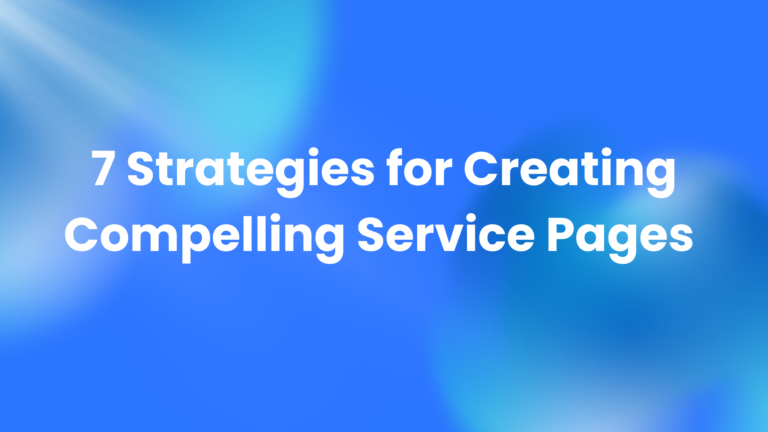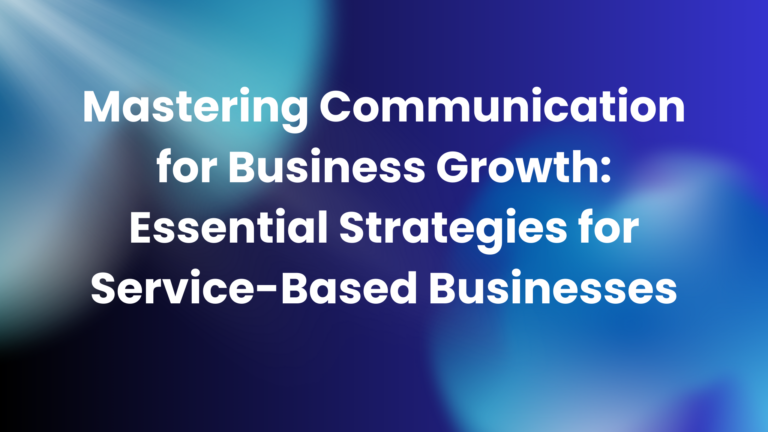Avoid These 5 Common SEO Mistakes That Service Businesses Make
Search engine optimization (SEO) is a powerful tool for service businesses aiming to reach more customers and improve their online presence. However, many businesses unintentionally make mistakes that hinder their SEO success. By understanding and avoiding these common errors, you can set your business on the right path to maximize your SEO efforts. Here are five common SEO mistakes that service businesses make — and how to avoid them.
1. Ignoring Local SEO
Local SEO is essential for service businesses because it helps you reach customers in your specific service area. However, many businesses overlook the importance of optimizing for local search, which can prevent you from appearing in relevant searches when potential customers are looking for nearby services.
How to Avoid This Mistake:
Focus on local SEO strategies, such as:
- Claiming Your Google Business Profile: Set up and fully optimize your Google Business Profile with accurate information, including your business name, address, phone number, and hours.
- Using Location-Based Keywords: Include city or neighborhood names in your website content, meta descriptions, and headings.
- Getting Local Citations: List your business on local directories such as Yelp, Angie’s List, and other industry-specific platforms. Consistent information across these platforms can boost your local SEO ranking.
By honing in on local SEO, your business is more likely to appear in “near me” searches and location-specific search results, driving more local traffic to your website.
2. Overloading Keywords
Keyword stuffing — the practice of overloading your content with keywords in an attempt to improve ranking — can actually have the opposite effect. Not only does keyword stuffing make your content difficult to read, but search engines may penalize you for it, pushing your website further down in search results.
How to Avoid This Mistake:
Focus on creating valuable, relevant content where keywords flow naturally. Here’s how to do it:
- Use Keywords Strategically: Include your primary keywords in the title, at least one subheading, and throughout the content, but keep it natural.
- Incorporate Synonyms and Related Terms: Use semantic keywords and related phrases to enrich your content and improve your chances of ranking.
- Prioritize Readability: Write for your audience first, and let keywords enhance your content rather than dominate it.
Search engines value user-friendly, informative content, so prioritize creating content that’s useful and engaging.
3. Neglecting Mobile Optimization
With mobile searches now surpassing desktop searches, it’s more important than ever to ensure your website is mobile-friendly. If your website isn’t optimized for mobile users, you risk losing potential customers who may become frustrated with poor navigation, long load times, or unreadable content on smaller screens.
How to Avoid This Mistake:
Make mobile optimization a priority by implementing these steps:
- Use a Responsive Design: A responsive website adapts to any screen size, whether it’s a desktop, tablet, or smartphone.
- Improve Load Times: Mobile users expect fast-loading pages. Compress images, minify CSS and JavaScript files, and reduce unnecessary elements to speed up load times.
- Test Your Site on Mobile Devices: Regularly test your website on various devices to ensure a seamless experience. Google’s Mobile-Friendly Test tool is a helpful resource for this.
By providing a positive mobile experience, you not only enhance user experience but also improve your search rankings, as Google factors mobile-friendliness into its algorithm.
4. Forgetting About Meta Descriptions and Title Tags
Meta descriptions and title tags may seem like minor details, but they play a significant role in SEO. Neglecting these elements can hurt your click-through rates, as they provide users with a preview of your content in search results. In fact, a well-crafted meta description can be the deciding factor in whether or not someone clicks on your link.
How to Avoid This Mistake:
Always include unique, compelling meta descriptions and title tags for each page on your website. Here are some tips:
- Keep Them Concise: Title tags should be under 60 characters, while meta descriptions should be between 150-160 characters.
- Use Keywords Naturally: Include your target keywords in both the title tag and meta description, but avoid keyword stuffing.
- Create a Compelling Call-to-Action: Encourage users to click by using action-oriented language, such as “Learn More,” “Contact Us,” or “Get Started.”
By optimizing your meta descriptions and title tags, you can improve your site’s visibility and encourage more users to click through to your content.
5. Not Tracking SEO Performance
One of the biggest mistakes service businesses make is failing to track and measure their SEO performance. Without monitoring key metrics, it’s difficult to understand what’s working and what needs improvement. SEO is an ongoing process, and tracking your results is essential for continuous optimization.
How to Avoid This Mistake:
Regularly track your SEO performance using tools like Google Analytics and Google Search Console. Focus on metrics such as:
- Organic Traffic: This shows how many users are finding your website through search engines. Look for trends in organic traffic to see if your efforts are driving more visitors to your site.
- Keyword Rankings: Monitor how your target keywords are ranking over time. Adjust your content and strategies based on these insights to improve rankings.
- Bounce Rate: A high bounce rate indicates that users are leaving your site quickly. Analyze which pages have high bounce rates and consider making changes to improve user engagement.
Tracking your SEO performance allows you to make data-driven decisions, helping you to continually improve your SEO strategy and maximize results.
Conclusion
Avoiding these common SEO mistakes can greatly improve your online visibility and help you attract more customers to your service business. By focusing on local SEO, using keywords effectively, optimizing for mobile, enhancing meta descriptions and title tags, and tracking your performance, you can create an SEO strategy that drives meaningful results. SEO is a long-term investment, but by steering clear of these pitfalls, you’ll set your business up for lasting success.
Ready to improve your SEO strategy? Contact us today to learn how we can help you enhance your website’s performance and grow your business.








